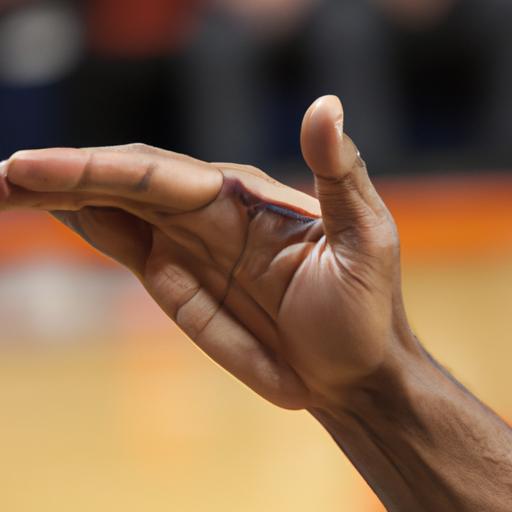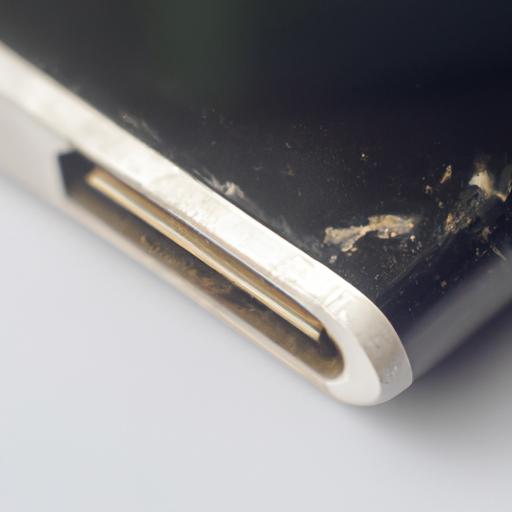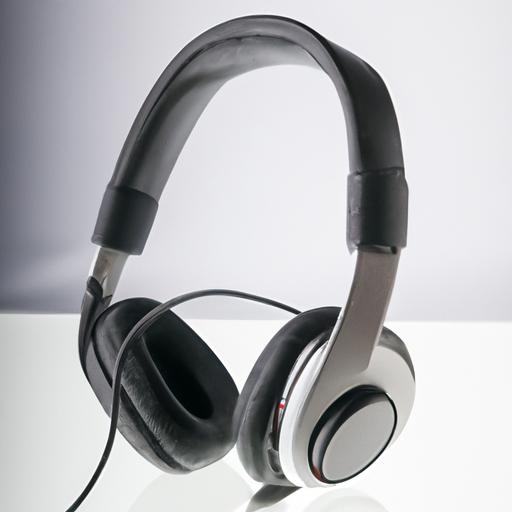Fouls in Basketball NBA: Understanding the Game-Changing Infractions
Basketball, known for its fast-paced action and high-flying dunks, is a sport that demands both skill and strategy. Within the exhilarating realm of NBA basketball, an important aspect that can greatly influence the outcome of a game is fouls. In this article, we will explore the various types of fouls in the NBA, their impact on the game, and why understanding them is crucial for players, coaches, and fans alike.
A Brief Explanation of Basketball Fouls in the NBA
Fouls in basketball occur when a player violates the rules established by the NBA. These infractions can range from minor personal fouls to more severe flagrant fouls, and even technical fouls that result from unsportsmanlike behavior. Understanding the different types of fouls is essential for players to navigate the game effectively and avoid costly penalties.
The Importance of Understanding Fouls in Basketball
Why should we bother understanding fouls in basketball? Well, the answer lies in the game’s dynamics. Fouls play a pivotal role in determining the flow of the game, affecting strategies, player rotations, and momentum shifts. By comprehending fouls, players can adapt their gameplay to avoid unnecessary violations, while coaches can devise effective defensive and offensive strategies. As fans, understanding fouls enhances our appreciation of the game, allowing us to analyze plays and referee decisions with a deeper understanding.
Now that we have laid the foundation, let’s delve into the different types of fouls in basketball nba. Stay tuned to explore the impact of personal fouls, technical fouls, and flagrant fouls, and gain a comprehensive understanding of their implications in the game. Remember, the key to mastery lies in understanding the rules and regulations that govern the game we love.
Types of Fouls in Basketball NBA
When it comes to fouls in the NBA, there are different categories that players can find themselves in. Understanding these distinct types of fouls is essential to grasp the intricacies of the game and its regulations. Let’s explore the three main types of fouls in basketball NBA: personal fouls, technical fouls, and flagrant fouls.
A. Personal Fouls
Personal fouls are the most common infractions seen in basketball games. They occur when a player makes illegal physical contact with an opposing player. These fouls can range from a minor bump to more severe actions that impede the opponent’s progress. Examples of personal fouls include pushing, holding, or striking an opposing player.
In the NBA, certain personal fouls are more prevalent due to the nature of the game and players’ strategies. Charges, blocking fouls, and reaching fouls are among the common personal fouls witnessed on the court. Understanding these fouls helps players navigate defensive and offensive maneuvers more effectively.
B. Technical Fouls
Technical fouls, unlike personal fouls, are typically a result of unsportsmanlike behavior or violations of rules that don’t involve physical contact with an opposing player. These infractions can include arguing with referees, using abusive language, or displaying disrespectful behavior towards opponents or officials.
Examples of technical fouls in the NBA include excessive complaining, taunting, or hanging on the rim after a dunk. It is important for players to exercise self-control and maintain sportsmanship to avoid unnecessary technical fouls that can lead to penalties and momentum shifts in games.
C. Flagrant Fouls
Flagrant fouls are the most severe type of fouls in basketball NBA. They involve excessive and unnecessary contact that may result in injury or harm to an opposing player. Flagrant fouls are considered dangerous and can lead to ejections, suspensions, and even fines.
Examples of flagrant fouls include hard fouls that involve excessive force, intentional tripping, or striking an opponent above the shoulders. These fouls not only disrupt the flow of the game but also pose risks to players’ safety.
By understanding the definitions and examples of personal fouls, technical fouls, and flagrant fouls in the NBA, players and fans alike can grasp the nuances of the game. In the following sections, we will delve deeper into the rules and regulations surrounding these fouls, as well as their impact on gameplay and player performance. Stay tuned to enhance your basketball knowledge!
Rules and Regulations for Fouls in Basketball NBA
Fouls in basketball NBA are not arbitrary judgments; they are guided by a comprehensive set of rules and regulations. Understanding these rules is vital for both players and referees to ensure fair and consistent gameplay. In this section, we will explore the NBA’s official rules on fouls and shed light on the considerations referees face when making these crucial calls.
A. NBA’s Official Rules on Fouls
-
How Fouls are Called and Assessed in the NBA: The NBA follows a well-defined process for calling and assessing fouls. Referees closely monitor the game, looking for any violations of the rules. When a foul is committed, the referee blows the whistle and makes the appropriate signal to indicate the type of foul. The offending player is then charged with the foul, and the opposing team is awarded free throws or possession of the ball, depending on the situation.
-
Penalties for Different Types of Fouls: The severity of fouls determines the penalties imposed on the player and their team. Personal fouls, such as pushing or illegal contact, usually result in free throws for the opposing team. Technical fouls, usually for unsportsmanlike conduct, lead to free throws and possession for the opposing team. Flagrant fouls, involving excessive force or intent to harm, can lead to ejections and severe penalties.
B. Important Considerations for Referees when Calling Fouls
-
Factors Influencing Foul Calls in the NBA: Referees have a challenging task in determining fouls accurately. They consider various factors, including the positioning of the referees, the speed and intensity of the game, and the players’ actions. Referees aim to make unbiased decisions based on their judgment and the rules of the game, but the interpretation of fouls can vary, leading to occasional controversies.
-
Challenges Faced by Referees in Determining Fouls Accurately: Refereeing an NBA game is no easy feat. Referees must make split-second decisions, often in high-pressure situations, while keeping up with the fast-paced nature of the game. The physicality and athleticism of the players add further complexity, as minor contact can sometimes be misinterpreted as a foul. Despite their best efforts, referees may occasionally make errors or face criticism, highlighting the difficulty of their role.
Understanding the intricacies of the NBA’s rules on fouls and the challenges referees face in enforcing them allows us to appreciate their expertise and the importance of maintaining a fair and balanced game. In the next section, we will explore the impact of fouls on NBA games and how they can shape the outcome of matchups.
Impact of Fouls on NBA Games
In the fast-paced world of NBA basketball, fouls can have a significant impact on the outcome of a game. Let’s explore how fouls affect gameplay and player performance, shedding light on the crucial role they play in shaping the dynamics of the sport.
Effect of Fouls on Gameplay
Fouls have the power to disrupt the flow and rhythm of a game. When a foul is called, play is momentarily halted, and the fouled team is awarded free throws or possession of the ball. This interruption can break the momentum of a team, allowing the opposing side to regroup and potentially mount a comeback. Additionally, frequent fouls can lead to a slower-paced game, reducing the excitement and intensity that fans crave.
To overcome foul troubles, teams employ various strategies. Coaches may make tactical adjustments, substituting players to avoid potential disqualification due to accumulated fouls. Additionally, teams can focus on defensive techniques that minimize contact and reduce the risk of fouls. Adapting to foul situations and maintaining composure are key attributes for teams aiming to overcome these challenges and secure victory.
Fouls and their Impact on Player Performance
Fouls can have a direct impact on player performance, particularly when a player is at risk of fouling out. In the NBA, players are disqualified from the game when they accumulate a certain number of personal fouls. This not only removes a key player from the team’s lineup but also forces the team to readjust their game plan and strategy on the fly.
When a star player fouls out, it can significantly alter the team dynamics. The absence of a key contributor can cause a team’s offense to falter, impacting scoring opportunities and overall performance. Moreover, the absence of a defensive stalwart can create openings for the opposing team to exploit, potentially shifting the balance of the game.
Understanding the impact of fouls on gameplay and player performance underscores the importance of discipline and strategic decision-making. By minimizing fouls and managing them effectively, teams can maintain their competitive edge and increase their chances of success on the court. Stay tuned as we explore some of the most controversial fouls in NBA history and how they have shaped the game we know and love.
Controversial Fouls in NBA History
The history of the NBA is filled with memorable moments, iconic players, and, of course, controversial fouls that have left fans and players in awe or disbelief. In this section, we will explore some of the most notable controversial fouls in NBA history, examining their descriptions, impact, and the aftermath that followed.
Notable Controversial Fouls in NBA History
-
The Malice at the Palace – One of the most infamous incidents in NBA history occurred on November 19, 2004, during a game between the Indiana Pacers and the Detroit Pistons. Following a hard foul, a brawl erupted between the players and spilled into the stands, resulting in suspensions, fines, and a tarnished reputation for those involved. This incident sparked debates about player conduct, fan behavior, and the need for increased security measures.
-
The Phantom Foul – In the 2006 NBA Finals, a pivotal moment took place during Game 5 between the Dallas Mavericks and the Miami Heat. With seconds remaining, Mavericks’ forward, Dirk Nowitzki, appeared to be fouled when driving to the basket. However, the referees did not make the call, leading to controversy and discussions regarding the consistency and accuracy of officiating in high-pressure situations.
Impact and Aftermath of Controversial Fouls
Controversial fouls have far-reaching consequences that extend beyond the game itself. They often become defining moments in NBA history, shaping rules, interpretations, and even the league’s approach to player conduct.
-
Public and Player Reactions to Controversial Fouls – Controversial fouls ignite passionate discussions among fans, players, and analysts. They become the subject of intense scrutiny and debates, both in traditional sports media and on social platforms. Fans express their opinions, questioning the fairness of calls, while players and coaches voice their frustrations or support for rule changes.
-
Changes in Rules or Interpretations due to Controversial Fouls – Controversial fouls can lead to changes in NBA rules or interpretations. The league often conducts thorough reviews following such incidents, aiming to refine the officiating process and maintain the integrity of the game. These changes may involve clarifying existing rules, implementing new guidelines, or providing additional training for referees.
Stay tuned as we explore the other sections to gain a comprehensive understanding of fouls in NBA basketball. From their types and regulations to their impact on gameplay and player performance, we are unraveling the intricate web of fouls in the NBA.
Impact of Fouls on NBA Games
Fouls in basketball NBA can have a profound impact on the flow and outcome of games. Understanding how fouls affect gameplay and player performance is crucial for teams aiming for victory. Let’s explore the significant ways in which fouls influence NBA games.
Effect of Fouls on Gameplay
Fouls can disrupt the flow of a game and alter its dynamics. When a foul is called, play is momentarily stopped, giving teams an opportunity to strategize and adjust their approach. This break in rhythm can hinder the offensive team’s momentum or provide the defensive team with a chance to regroup and tighten their defense. Both teams must adapt to the changing circumstances, making fouls a crucial factor in determining the ebb and flow of a game.
Teams facing foul troubles must also employ specific strategies to overcome these challenges. When key players accumulate fouls, coaches may choose to rest them to avoid fouling out. This strategic decision can impact team rotations, forcing other players to step up and fill the void. Additionally, teams may adjust their defensive strategies to minimize contact, preventing further fouls and preserving their best players for critical moments of the game.
Fouls and their Impact on Player Performance
Fouls can significantly impact individual player performance, especially when players accumulate fouls and risk fouling out of the game. When a player commits multiple fouls, they are forced to play more cautiously to avoid disqualification. This can hinder their aggressiveness on both offense and defense, limiting their effectiveness and potentially altering the game’s outcome.
Moreover, foul troubles can disrupt team dynamics. When a team’s star player is in foul trouble, it not only affects their individual performance but also impacts the team’s overall strategy. Coaches may need to rely on bench players or adjust their offensive and defensive schemes to compensate for the absence or limited playing time of key players. This puts additional pressure on the entire team to step up and fill the void left by the fouled-out player.
In conclusion, fouls in basketball NBA have a profound impact on the gameplay and individual player performance. The disruptive nature of fouls and the strategies employed to overcome foul troubles make them an integral part of the sport. By understanding the effects of fouls, teams can navigate these challenges more effectively, maximizing their chances for success on the court. So, the next time you watch an NBA game, pay attention to the fouls and their influence on the game’s dynamics – it’s a fascinating dimension of this captivating sport.






